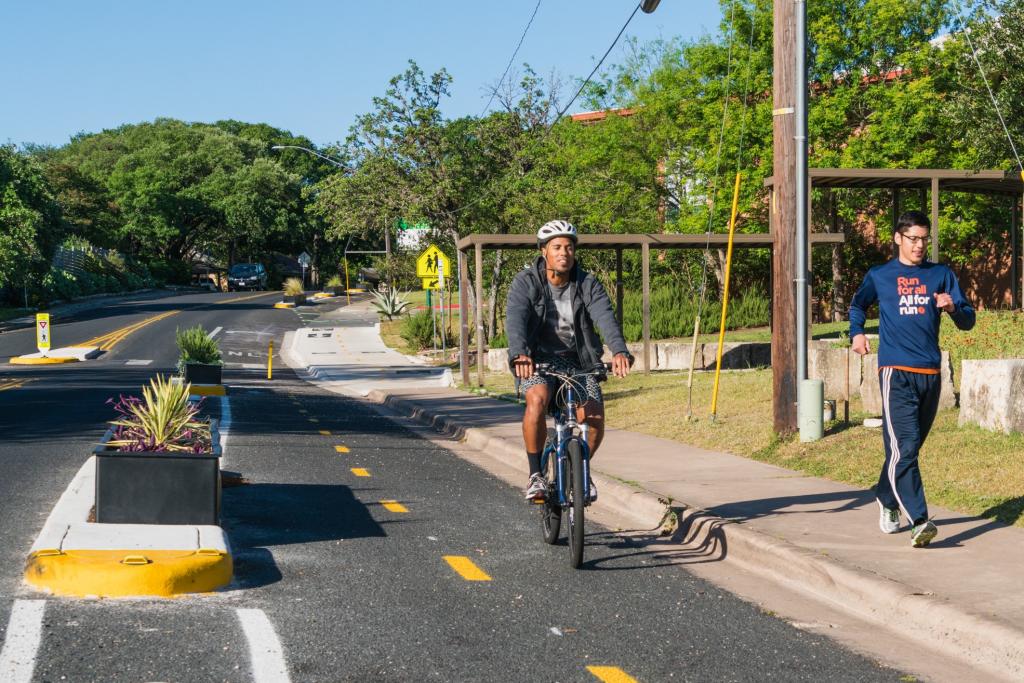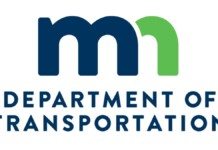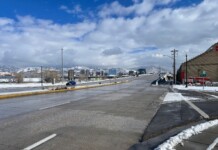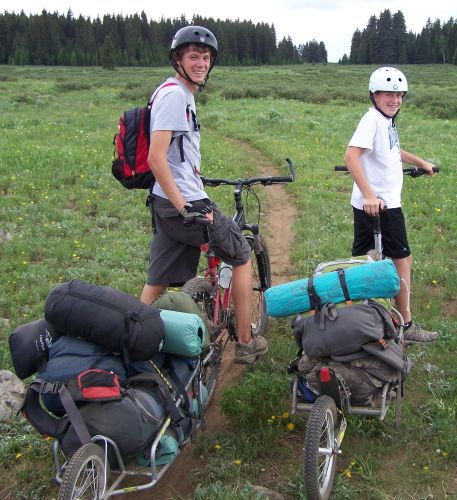“Benchmarking Bike Networks” showcases how five communities increased ridership and safety through building bike lanes in connected networks
“Benchmarking Bike Networks”, a new report released today by the League of American Bicyclists (League), shows the importance of safe bicycle infrastructure and connected bicycle networks in increasing the safety and accessibility of bicycling as a transportation and recreational option. The report’s findings demonstrate why communities around the United States should prioritize building the safest bicycle facilities for appropriate road contexts to connect more people and neighborhoods to more places.

The League hopes this report will serve as a tool for communities, planners, state and local bike advocacy organizations, cycling clubs, and individuals who bike to be advocates for bike infrastructure and networks that will contribute to building a Bicycle Friendly America for Everyone. With a record-high amount of federal funding directed towards projects to improve bicycling and walking in the most recent infrastructure bill, now is the time for communities to build towards a future where active transportation by bike is a safe and easy choice to make.
Currently, the United States is 40 years behind peer countries in Europe when it comes to developing bike networks with bike facilities for people of all ages and abilities. “Benchmarking Bike Networks” emphasizes using a Safe System Approach, which focuses on anticipating human error and minimizing impact, when building connected networks. Analyzing several bicycle infrastructure design guides, the report also provides definitions and examples of better bicycling facilities and a summary of best practices for different street contexts based on two commonly used and available measures: traffic speed and traffic volume.
“With ‘Benchmarking Bike Networks’ we want to give advocates for better biking another tool to ensure streets in their community are designed in the safest way possible,” said Bill Nesper, executive director of the League of American Bicyclists. “We know the most Bicycle Friendly Communities are ones that have embraced building networks of low-speed streets and context-appropriate bike facilities that create safe, comfortable connections for people. Plus, research and the experience of cyclists continue to reinforce that properly implemented bicycle networks with safe bicycling infrastructure is incredibly effective in increasing bicycling levels and decreasing bicyclist deaths.”
Featured in the report are case studies from Oakland, CA; Austin, TX; and Missoula, MT, all Gold-level Bicycle Friendly Communities as designated by the League, as well as Boston, MA; and Chicago, IL, Silver-level Bicycle Friendly Communities. These five cities have seen bicycle mode share grow in the last decade through expanded bike networks and improved bike facilities. Consistent themes throughout the case studies include planning, leadership, and creating and maintaining an up-to-date inventory of city bicycle facilities, as well as tracking their development.
“Benchmarking Bike Networks” also provides insight into the roadblocks that have inhibited the development of connected bicycle networks in the U.S. Bicycle networks often take years of planning and even more time and funding to implement, and the report addresses developing norms and standards for bicycle networks that would make it easier for communities to know where to start. While the National Association of City Transportation Officials (NACTO) and the Federal Highway Administration (FHWA) have published influential guidance on bicycle facility selection, not every state or local jurisdiction has followed these guides.
“Unfortunately, we are incredibly far from having comparable state-by-state data and standards that will allow us to truly comprehend bike networks but by analyzing how existing networks were developed, we can help others adopt an approach that’s best for their streets and create safer places to bike throughout communities,” said Ken McLeod, policy director of the League and lead author of the report. “We see that every approach to building better bike networks starts with the safest and most protected bicycling facilities, like separated bike lanes, and we hope that current and aspiring Bicycle Friendly Communities everywhere will embrace building more.”
Updates to the Bicycle Friendly Community application, which is currently offline through May 2022, will include revised questions around on- and off-street bike infrastructure to reflect current national guidance and best practices and to allow for a more in-depth consideration of the quality and distribution of bike facilities and of a community’s overall bicycling network.










